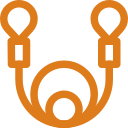Take-Profit Order TP: How to Maximize Profits in Trading
Most traders use both stop-loss and take-profit orders to stay balanced. This way, they can manage their risks while also aiming for profits. When traders enter a trade, they usually have a target price in mind where they would like to exit the trade and make a profit. Traders can set multiple take-profit levels, with TP1 being the first level TP2 being the second level and TP3 being the third level.
Example: Support and Resistance Levels
This is particularly useful for busy traders or those using automated trading strategies with FXProfitBuilder, which integrates signals and automated trading systems. To set the stop loss, traders can drag the line up for sell orders or drag it down for buy orders. Similarly, to set the take profit, they can drag the line down for sell orders or drag it up for buy orders. This intuitive and visual method allows traders to easily adjust their stop loss and take profit levels according to their trading strategy and market conditions. In trading, the strategic interplay between take-profit (TP) and stop-loss (SL) orders is pivotal for traders aiming to achieve balanced risk management.
Dynamic Adjustments While the Trade is Open
Some of the most important factors determining how successful forex traders are the trade’s size and the risk ratio to the reward. For short term trading, it is better to use a take profit strategy. A take-profit order (TP) is a strategic tool allowing traders to set a predefined price level where they intend to lock in profits from an open position. This makes managing trades efficient, especially when combined with stop-loss orders to balance potential gain and risk. Discover how TP orders can enhance short-term trading strategies and risk management.
What Does Take Profit Mean in Forex?
This method allows for better control over trades and helps minimize potential losses. It’s a smart way to improve a trader’s moves in volatile financial markets. Adam Lemon began his role at DailyForex in 2013 when he was brought in as an in-house Chief Analyst. Adam trades Forex, stocks and other instruments in his own account. He has previously worked within financial markets over a 12-year period, including 6 years with Merrill Lynch. Many forex traders are using the average true range or pivot points for defining the right level for taking profit forex-order.
- If you are a trader you have come across the terms “TP1” “TP2” and “TP3” more especially if you are a swing trader.
- By using TPT CopyTrade, which works with brokers like Exness and LiteFinance, you can make the most of stop-loss orders.
- By following these simple steps, traders can effectively set stop loss and take profit orders, enabling them to manage their risk and secure profits in their trading endeavors.
- Using these tools well promises a methodical and rewarding journey in the Forex market.
A trader, monitoring the situation, decides to adjust the take-profit order to a more conservative level, safeguarding profits amid the heightened uncertainty. Take Profit orders are typically used in conjunction with Stop Loss Orders to manage risk and protect potential profits. With a take-profit order, the trader need not track the stock all day or guess how high it might go. There is a well-defined risk-to-reward ratio, and the trader knows what to expect before the trade even occurs.
Suppose a trader sees an ascending triangle and opens a new long position. If the stock breaks out, the trader expects a 15% rise from current levels. If the stock doesn’t break out, the trader wants to quickly exit the position and move on to the next opportunity.
Table of content
Simultaneously, a stop-loss order could be placed just above the resistance level to mitigate losses if the expected reversal does not materialise. Technical analysis, including chart patterns, plays a crucial role in determining optimal levels for setting TP and SL orders. The relationship between TP and SL is integral to establishing a risk-to-reward ratio, a key metric guiding traders in their decision-making process. The risk-to-reward ratio determines the potential loss against the potential gain in a trade, influencing the overall profitability of a trading strategy. Technical analysis serves as the cornerstone for informed decision-making in trading, and when it comes to placing take-profit orders, a precision approach is crucial. Take-Profit orders help you match your trade size with how much risk you’re willing to take and how you distribute your money.
However, it’s crucial to emphasize that relying solely on multiple take-profit levels does not guarantee success in forex trading. Traders must complement this approach with a robust trading strategy and a well-structured risk management plan to make informed decisions. Take profit orders, on the other hand, are designed to secure profits.
Chart Patterns and TP/SL:
Traders commonly rely on chart patterns, support and resistance levels, and trend analyses to inform their decisions. This data-driven approach ensures that take-profit orders are placed at points where the market is likely to react. Take-Profit orders are key tools for traders, especially in the ever-changing Forex market.
What is TP (Take Profit) in Trading?
- In simple terms, TP1, TP2, and TP3 are price levels that traders set in advance to exit a trade and take profits.
- As a trader, everyone wants to take advantage of the market volatility.
- The risk-to-reward ratio determines the potential loss against the potential gain in a trade, influencing the overall profitability of a trading strategy.
- It is not a strategy that you can trade but it indicates the price where you will be taking your first profit (TP1) your second profit (TP2) and your third (TP3).
If you are a trader you have come across the terms “TP1” “TP2” and “TP3” more especially if you are a swing trader. These refer to “take profit 1”, “take profit 2” and “take profit 3”, respectively. In simple terms, TP1, TP2, and TP3 are price levels that traders set in advance to exit a trade and take profits. TP, in trading, stands for “Take Profit.” It refers to a predetermined level at which a trader aims to close a position to secure profits. Chart patterns are a fundamental aspect of technical analysis, guiding traders in identifying potential price movements.
Adding Take Profit orders to your trading plan can make you a more careful and successful trader. Using these tools well promises a methodical and rewarding journey in the Forex market. To set your exit point, simply forex tp drag the green trade line to your desired take-profit (TP) level.
Traders can go back to the Edit Trade window and modify the take-profit parameters, responding to changing market conditions or new information. To initiate the process, traders need to access the Edit Trade window within their trading platform. This window serves as the central hub for managing open positions and implementing various order types.
In this article, today we’ll be discussing what is SL and TP in forex, what are the benefits of using them, and how to use them. The content on this site encompasses general news, our analyses, opinions, and material from third-party sources, all designed for educational and research aims. It is not meant as direct advice or a prompt to undertake any specific action, including investments or purchases.
Support and resistance levels are key markers in technical analysis, representing points where the price has historically shown strength or weakness. Traders often place take-profit orders at or near these levels, anticipating potential price reactions. Market conditions are dynamic, and strategic placement requires adaptability. Traders should be vigilant about adjusting take-profit orders based on changing market dynamics, news events, or unexpected price movements. This flexibility ensures that take-profit orders remain aligned with the evolving market scenario.











